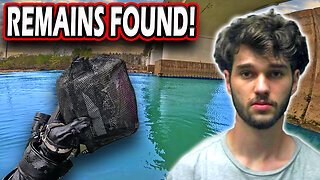Premium Only Content

US CIA Operation Paperclip
I received this comment on Instagram: "i'm glad we got a hold of them first. Think about it.... horrible people. But imagine how much more horrible this would've been if Russia had gotten a hold of them first??"
To which I replied, "but they should have been executed for their crimes against humanity. Held responsible for the atrocities they committed. Not rescued and allowed to live lavish lives and given accolades."
What Was Operation Paperclip?
[source: History.com]
As World War II was entering its final stages, American and British organizations teamed up to scour occupied Germany for as much military, scientific and technological development research as they could uncover.
Trailing behind Allied combat troops, groups such as the Combined Intelligence Objectives Subcommittee (CIOS) began confiscating war-related documents and materials and interrogating scientists as German research facilities were seized by Allied forces. One enlightening discovery—recovered from a toilet at Bonn University—was the Osenberg List: a catalogue of scientists and engineers that had been put to work for the Third Reich.
In a covert affair originally dubbed Operation Overcast but later renamed Operation Paperclip, roughly 1,600 of these German scientists (along with their families) were brought to the United States to work on America’s behalf during the Cold War. The program was run by the newly-formed Joint Intelligence Objectives Agency (JIOA), whose goal was to harness German intellectual resources to help develop America’s arsenal of rockets and other biological and chemical weapons, and to ensure such coveted information did not fall into the hands of the Soviet Union.
Although he officially sanctioned the operation, President Harry Truman forbade the agency from recruiting any Nazi members or active Nazi supporters. Nevertheless, officials within the JIOA and Office of Strategic Services (OSS)—the forerunner to the CIA—bypassed this directive by eliminating or whitewashing incriminating evidence of possible war crimes from the scientists’ records, believing their intelligence to be crucial to the country’s postwar efforts.
One of the most well-known recruits was Wernher von Braun, the technical director at the Peenemunde Army Research Center in Germany who was instrumental in developing the lethal V-2 rocket that devastated England during the war. Von Braun and other rocket scientists were brought to Fort Bliss, Texas, and White Sands Proving Grounds, New Mexico, as “War Department Special Employees” to assist the U.S. Army with rocket experimentation. Von Braun later became director of NASA’s Marshall Space Flight Center and the chief architect of the Saturn V launch vehicle, which eventually propelled two dozen American astronauts to the Moon.
Although defenders of the clandestine operation argue that the balance of power could have easily shifted to the Soviet Union during the Cold War if these Nazi scientists were not brought to the United States, opponents point to the ethical cost of ignoring their abhorrent war crimes without punishment or accountability.
-
 1:08
1:08
GlobalAwareness101
6 days agoIs the Talmud the playback for Zionism? History we were never taught.
150 -
 LIVE
LIVE
Badlands Media
8 hours agoDevolution Power Hour Ep. 343
19,728 watching -
 DVR
DVR
Man in America
10 hours agoMarket Crash, Tariffs, USD Collapse: Trump's Plan to END the Old World Order? w/ John Perez
30.4K15 -
 8:07
8:07
Colion Noir
6 hours agoShould You Carry Non-Lethal Weapons For Self Defense?
28.8K49 -
 14:53
14:53
Forrest Galante
1 hour agoAustralia's Top 5 Deadliest Animals
3.34K8 -
 LIVE
LIVE
DLDAfterDark
1 hour agoDLD Live! What's The "best" PDW?? Considerations For Trunk/Truck Gun & Gats in Bags & Backpacks
218 watching -
 15:25
15:25
Exploring With Nug
12 hours ago $1.30 earnedBag of Phones Found While Searching For Missing Man In River!
50.9K19 -
 LIVE
LIVE
fuzzypickles168
2 hours agoLate Nite Jam Session - Rock Band 4 | Was: EA Sports WRC | 1 John 2:1-17
48 watching -
![Nintendo Switch It UP Saturdays with The Fellas: LIVE - Episode #13 [Mario Kart 8 Deluxe]](https://1a-1791.com/video/fww1/97/s8/1/1/g/A/z/1gAzy.0kob-small-Nintendo-Switch-It-UP-Satur.jpg) 3:33:38
3:33:38
MoFio23!
11 hours agoNintendo Switch It UP Saturdays with The Fellas: LIVE - Episode #13 [Mario Kart 8 Deluxe]
18.9K -
 23:24
23:24
MYLUNCHBREAK CHANNEL PAGE
12 hours agoDams Destroyed Turkey
72.6K64